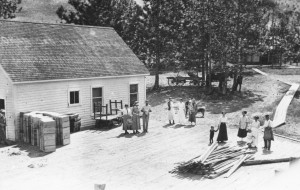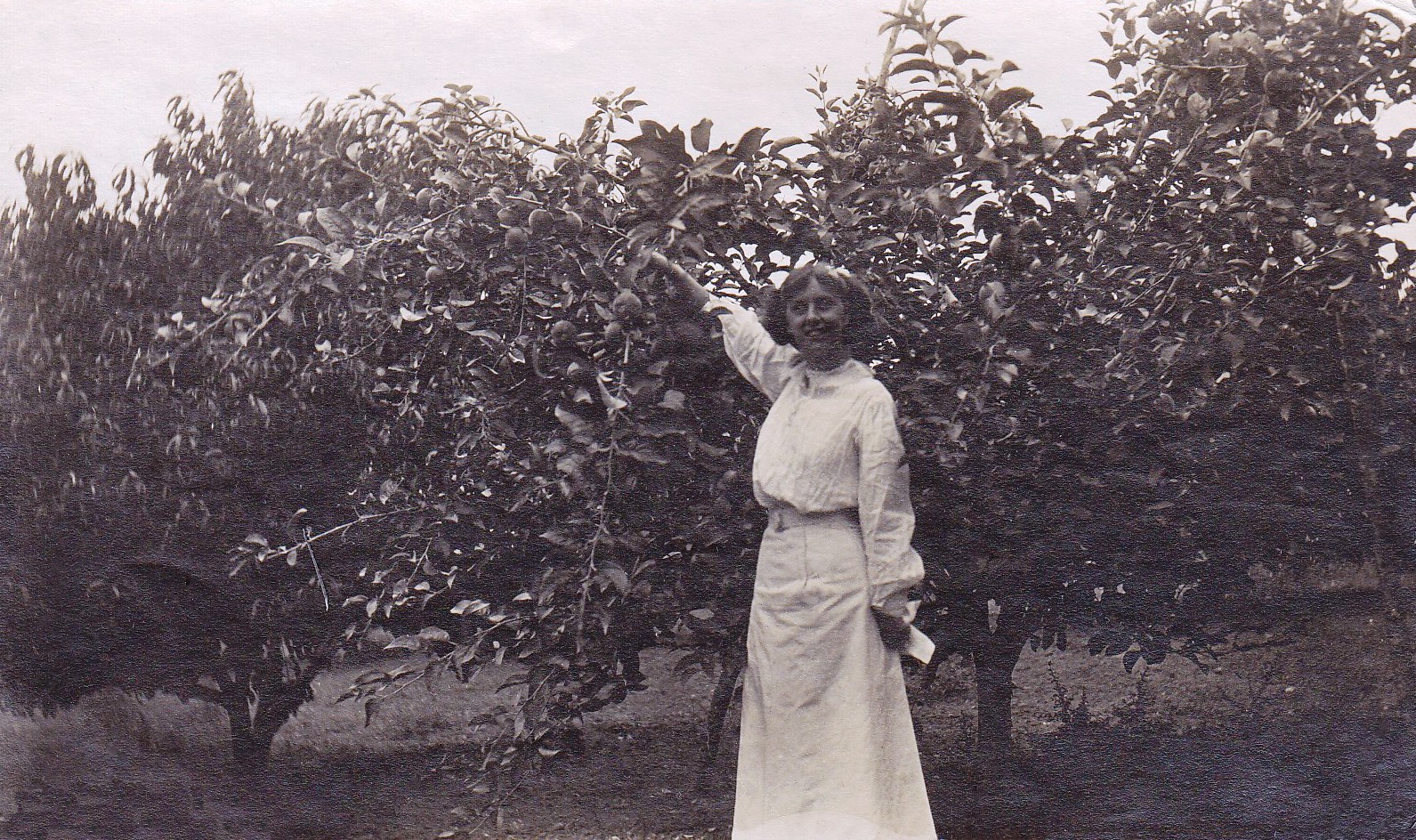Beginnings
In 1909 the landscape and economy of Lake Country changed with irrigation. Throughout the valley, orchards gradually replaced ranches. Good soil, a temperate climate, and a long growing season made this valley an ideal location for fruit trees and it quickly became the fruit basket of the west. Orchards soon encompassed much of Lake Country and apple packing became a major business.
This is where the story of the applebox belles begins.
In the early days, the belles were not paid for packing apples. The wives and daughters of the growers helped with picking and packing during each harvest, but orcharding was considered men’s work and women were not employed in any paid capacity.
The fruit was picked and packed fresh right in the orchard. Boxes of just-picked apples were placed on a bench and the packer selected apples one at a time, wrapped each in paper, and placed the apple into an empty box according to size and grade. Women worked alongside their men at the packing bench to quickly pack the harvest, a long and exhausting day for the belles when added to their chores of home and farm.




